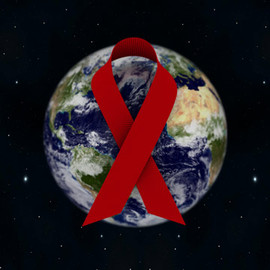Introduction

Each year on December 1, people all over the globe celebrate World AIDS Day. It is a way to remember those who perished because of the disease and to remind everyone that AIDS is very much present.
History

The history of world AIDS day is traced in August 1987 when two men, James W. Bunn and Thomas Netter, working for the World Health Organization (WHO) in Geneva, Switzerland conceived the idea of setting a day for remembering the pandemic that continues to affect the world to this day. These men were public information officers of the Global Programme on AIDS with Dr. Jonathan Mann, serving as its Director. Nowadays, this organization is known as the United Nations on AIDS (UNAIDS). Dr Mann agreed to the idea and even recommended that the first observance of the special day should be on December 1, 1988. Succeeding initiatives lead to Bunn working with Dr. Mann to set up the Global Programme on AIDS. However, it was the team of Bunn and Netter who initially envisaged the idea of World AIDS Day.
Features

Since 1996, the Joint United Nations Programme on HIV and AIDS handles the HIV/AIDS awareness campaign and promotion. A year later (1997), the campaign shifted to an all year round activity focusing on information dissemination, education, and prevention. Thus, HIV/AIDS awareness was not confined on World AIDS Day only but as a constant campaign to increase the information, education, and prevention reach globally.
Each time that the World AIDS Day is celebrated, themes are created and assigned. In the first 2 years of its implementation, the campaign focused on children and young people, those vulnerable groups in society affected by the pandemic.
From 1981 to 2007, 25 million people died due to HIV or AIDS related diseases (2008 Global Report, UNAIDS). Of the 2 million deaths in 2007, 270,000 were children or young people with no chance of living to adult life because of HIV/AIDS.
Examples of the AIDS day campaign lines are: 'Communication, Youth, Women and AIDS'; 'Sharing the Challenge'; 'One World. One Hope.'; 'Children Living in the World of AIDS'; 'Force for Change: World AIDS Campaign with Young People'; and 'Listen, Learn, Live: World AIDS Campaign with Children and Young People'.
However, this move drew lots of criticism from people claiming that the disease not only affects children and juveniles but people of all ages. Nonetheless, the campaign was successful in increasing awareness among people all over the world on the significance and impact of the disease on their lives. It also reduced the traditional stigma associated with the disease helping families and individuals recognize the extent of the problem and to treat it as a disease. Themes such as 'AIDS and the Family', 'Sharing the Challenge', and 'Community Commitment' attest to the intention to draw in all members of society to combat the incidence of the disease.
Since 1994, World AIDS day is an independent campaign. A few examples of recent themes include: 'AIDS: Men Make A Difference'; and 'Universal Access and Human Rights.'
From 2011 to 2015, the theme is, 'Getting to Zero', signifying the intensity of the campaign to reduce death and transmission rates to zero. World AIDS Day, therefore, is not only an information and education campaign, but also works to remind people that the pandemic is a battle that must be fought by everyone for it to be eliminated.